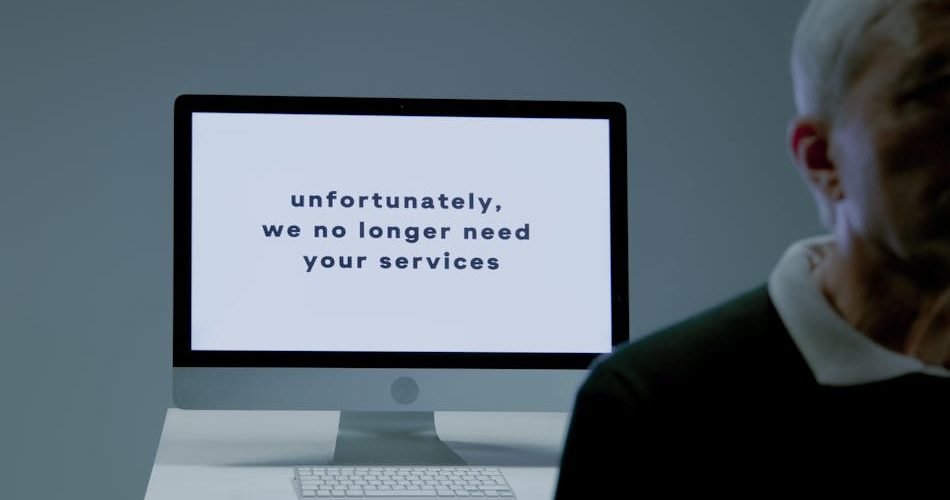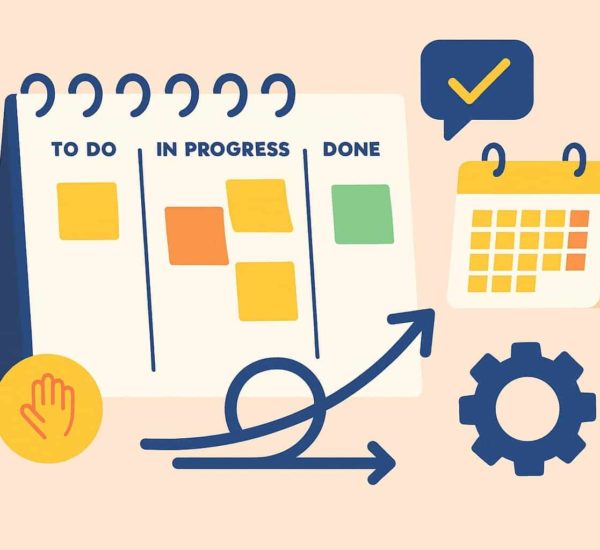Job layoffs are undoubtedly one of the most challenging aspects of leadership, affecting both employees and managers alike. Whether it’s due to economic downturns, restructuring, or company performance, being part of a layoff process can be an emotional and stressful experience. It’s not just about the numbers; it’s about the people behind those numbers. As organizations navigate difficult decisions like HCA layoffs or Quest Diagnostics layoffs, the way leaders communicate and manage the process can significantly impact the well-being of those affected.
Handling job layoffs with compassion and dignity is not just the right thing to do—it’s also essential for maintaining a positive workplace culture, even in the face of adversity. When approached with empathy and respect, employees can leave a company with a sense of dignity, ensuring that the process doesn’t erode trust or morale. In this blog, we’ll explore effective strategies for managing layoffs with sensitivity, from conducting all-hands meeting layoffs to offering ongoing support to both departing employees and those who remain.
How to Handle Job Layoffs with Dignity?
1. Treat Employees with Dignity and Fairness
One of the most important things you can do when delivering difficult news is to address the “What does this mean for me?” question directly. Be clear about the reasons behind the layoffs—whether it’s due to market shifts, technological changes, or operational issues. Take the time to explain the timeline, the severance package, and most importantly, how you will assist them in finding their next role. Set the expectation for how you need their support during the transition to ensure a smooth handover for customers.
2. Over-Communicate
One of the most important aspects of any layoff process is communication. Keeping employees informed throughout the entire transition is crucial to maintaining trust. Hold frequent meetings, be upfront about developments, and provide clear and honest information to reduce uncertainty. This includes addressing language barriers—when I was working with a company that had a large Vietnamese-speaking workforce, we brought in translators to ensure all messages were understood. Clear communication is key to easing the emotional toll on affected employees.
3. Be Present and Approachable
During times of uncertainty, leaders should be visible and available to their teams. If a closure or downsizing affects a significant part of the business, senior leaders should be actively involved in the process. A visit from the CEO or division heads can offer a sense of solidarity and assurance that leadership is not avoiding the hard decisions but facing them head-on. Showing up for your employees makes a world of difference in maintaining morale during difficult transitions.
4. Set a Positive Example
Leaders must take personal responsibility for how job layoffs are handled within the company nd set a positive example while they do it.
5. Avoid Dehumanizing Practices
One of the most disheartening images during jobs is seeing employees escorted out with their personal belongings in boxes. This “walk of shame” approach is not only unnecessary but dehumanizing. While protecting sensitive information is important, there are respectful ways to handle the transition without humiliating those affected. Companies should find a balance between safeguarding their interests and treating people with kindness and respect during their exit.
6. Make job Decisions Based on Objectivity
Decisions about who stays and who goes should be made based on clear, objective criteria. At Quest Diagnostics, when we merged with SBCL, we didn’t rely on gut feelings or company loyalties when choosing the leadership team. We conducted a thorough evaluation of everyone in senior positions, using external assessments to ensure the decisions were based on merit, not on which company they came from. This approach ensures fairness and transparency throughout the process.
7. Support Employees in Their Transition
One of the most important aspects of any job process is offering support to those affected. If possible, provide opportunities within other areas of the company or explore contract work. At the very least, assist with job fairs, résumé-building workshops, and networking opportunities. Helping employees land on their feet as they transition to new roles is a critical part of showing care and respect.
8. Treat Your Customers and Suppliers as Valued Partners During a Shutdown
When navigating a shutdown or closure, it’s vital to treat both customers and suppliers with the same respect and care as you would valued partners. By keeping them informed and considering their needs, you can maintain strong relationships even through challenging times. Before you announce any closure, take the time to communicate your intentions to your customers. Ensure they know that you’re committed to finding a solution that works for everyone. In some cases, this might mean extending the life of an operation longer than planned. The extra cost of delaying a closure by a few weeks or months can often be outweighed by the future loyalty and business generated by appreciative customers.
9. Maintain a Focus on Quality
During a closure or downsizing, it’s crucial to not let quality suffer. This underscores the importance of treating employees with dignity and respect. Low morale can negatively impact the standard of work, so keeping staff engaged and motivated is essential. By maintaining the focus on quality, you ensure that the transition does not harm the brand’s reputation.
10. Collaborate with Suppliers to Maintain Standards
Just as with customers, suppliers are key partners and should be treated as such throughout the shutdown process. Keep them informed ahead of time about your plans and the reasons behind the closure. Work together to create a plan that ensures the continuity of service and product quality. By involving them early in the process, you can avoid disruptions and ensure a smoother transition.
11. Treat the Shutdown as a Project
Managing a shutdown or layoff requires careful planning and oversight. Appoint a project leader who has both the authority and experience to guide the process effectively. This leader should be someone with credibility within the organization, capable of balancing the needs of all stakeholders. Alongside them, build a team with the necessary skills—both technical expertise and a strong ability to manage customer relationships, stay focused on objectives, and handle the human side of the process.
Implement the same strategies used in traditional project management. Clearly define the stages from planning through to closure, assign specific responsibilities, and set criteria that must be met at each phase. Conduct regular progress reviews with senior leadership to ensure everything stays on track.
Key Strategies for Employers Managing Job Layoffs
Assume Your Layoff Discussion Could Be Public
We’ve all heard the advice, “Don’t send an email you wouldn’t want to see plastered on a billboard.” Today, it’s more fitting to say, “Don’t say anything you wouldn’t want to see going viral on the internet.”
Gen Z, more so than any previous generation, is highly comfortable sharing their experiences online. That means you should approach a layoff conversation with the understanding that it could be recorded or shared with a broader audience.
Here’s what you can do to prepare:
Plan and Stick to Your Script
Prepare in advance for the conversation. It’s perfectly acceptable to admit when you don’t have all the answers, whether by saying, “I don’t have the answer to that right now,” or “Let me get back to you on that.” Staying transparent and on-topic helps you maintain control of the conversation.
Have a Support Person in the Room
Don’t face the conversation alone. If you’re a manager, having someone from HR with you can provide a supportive presence. If you’re from HR, bring along a colleague. A second voice can help diffuse tension and ensure the discussion remains professional.
Give Space for Emotional Reactions
Job layoffs are deeply emotional, and it’s natural for people to react with tears, anger, or frustration. Once the news is delivered, give the individual time to process. Resist the urge to rush through the details of the next steps or benefits immediately. Sometimes, a quiet pause can provide the space needed for emotional processing.
Supporting Employees During the Transition
Remember, there was a time when your company was excited to bring this individual on board. During this difficult transition, approach the situation with empathy, recognizing the challenges they’re now facing. Demonstrate compassionate leadership by:
- Providing a Clear Transition Plan
Ensure that employees understand the next steps clearly. This includes details about severance packages, continuation of benefits, and any outplacement services you offer. Transparency during this process is key to helping them feel supported.
- Offering Career Support Resources
Help ease the transition by providing resources that can assist with their job search. This could include resume-writing workshops, job-searching tools, or even personalized career coaching. By offering this support, you not only show care but also enhance their chances of securing new employment.
- Keeping Lines of Communication Open
Ensure employees have a point of contact for any follow-up questions or concerns. Let them know who they can reach out to if they need clarification or assistance, and be responsive to their needs. Clear communication helps to maintain trust and minimizes confusion.
Encourage Professional Growth During Transitions
While job layoffs often signal an ending, they can also serve as a stepping stone to new beginnings. By offering professional development opportunities, you not only support your former employees in their career journey but also reinforce your company’s reputation as one that genuinely cares about its workforce.
Consider these strategies to help facilitate their growth:
- Provide Professional Training Opportunities
Offer access to professional training programs that help employees enhance their skills and increase their marketability. This investment in their development helps them stay competitive in the job market, making it easier for them to transition post-layoff.
- Create Networking Opportunities
Assist in connecting employees with industry contacts, either through introductions or by providing strong references. These networking opportunities could lead to future job opportunities and offer valuable career support during their layoff period.
- Offer Educational Resources
Support employees in their career transition by providing access to educational resources like online courses or industry certifications. These tools can help them pivot to new roles or advance in their careers, ensuring they remain adaptable and capable of pursuing new opportunities after being laid off.
Job Layoff Memes
Layoffs are never easy, but sometimes a little humor can help lighten the mood and relieve some of the tension. Layoff memes, often filled with relatable and funny takes on a difficult situation, can provide a moment of levity for employees who may be feeling stressed or uncertain. While it’s important to approach job layoffs with sensitivity and support, a well-timed meme can create a sense of camaraderie and help people navigate through tough times with a smile. Just remember, humor should always be used carefully and in the right context to ensure it doesn’t diminish the seriousness of the situation. Let’s look at a few!



job layoffs meme

To Sum Up Job Layoffs
When it comes to how to lay off employees with dignity, it’s essential to approach the situation with empathy and transparency. The way job layoffs are handled speaks volumes about your company’s values and can significantly impact your reputation. Rather than focusing solely on the business aspect of job layoffs, ensure that employees feel respected throughout the process.
Communicate the reasons behind the layoff clearly and compassionately, offering support where needed. It’s also crucial to acknowledge that job layoffs can be an emotional experience. Employees may feel shocked, angry, or even humiliated, which is why dignity in employment should be at the forefront of every conversation.
In today’s digital age, layoff memes and jokes about getting laid off can often circulate, but that doesn’t mean the situation should be treated lightly. Rather than participating in the humor, take a proactive role in showing your employees they matter and will be supported. By offering resources such as severance packages, career coaching, and job search assistance, you can help ease the transition. job layoff memes may highlight the emotional side of losing a job, but treating individuals with dignity and care will set a positive tone during a challenging period.
At the end of the day, the way you handle a job layoffs can impact not just the individual, but the morale and perception of the entire organization. Demonstrating care and responsibility can transform a difficult situation into one of mutual respect.



